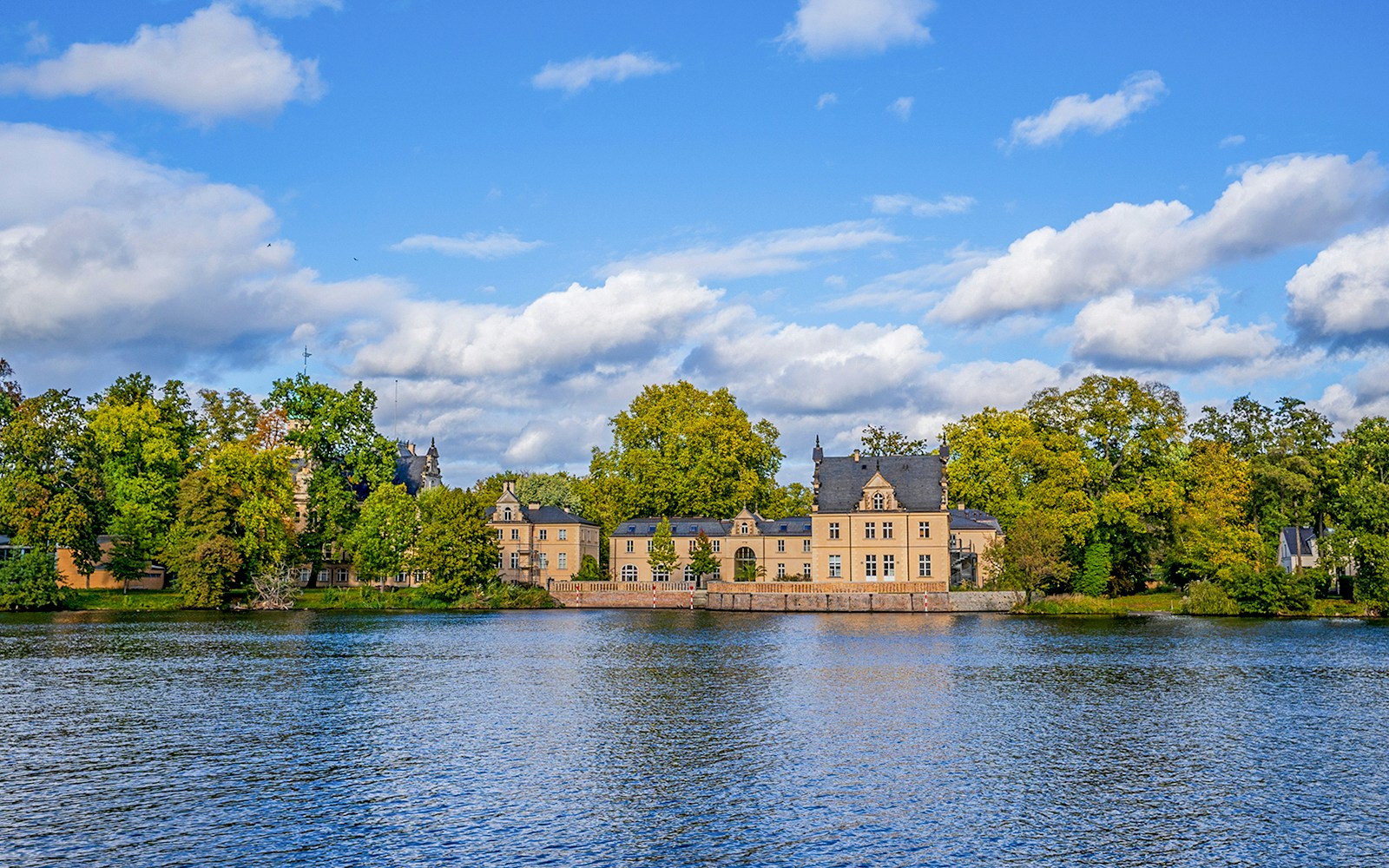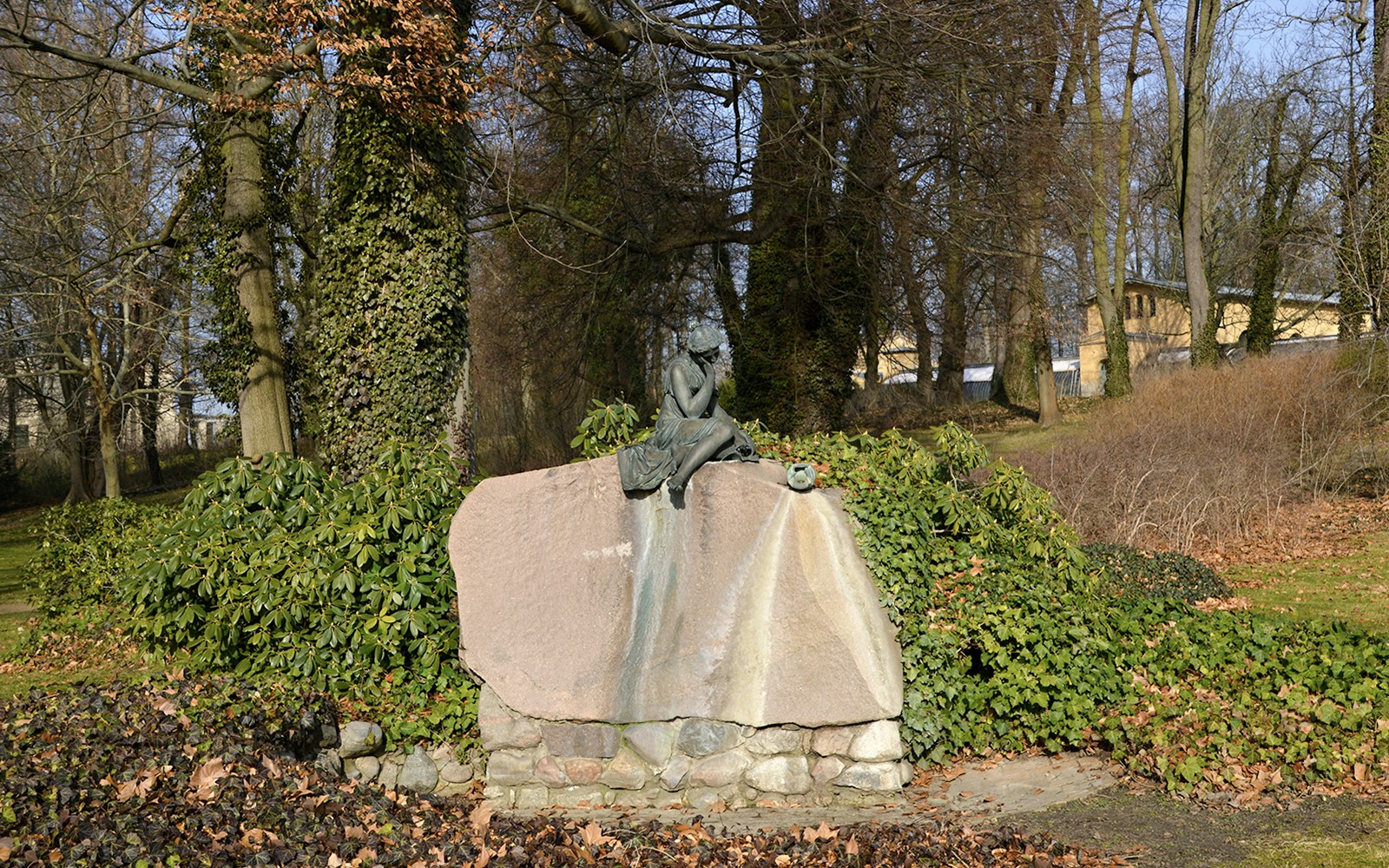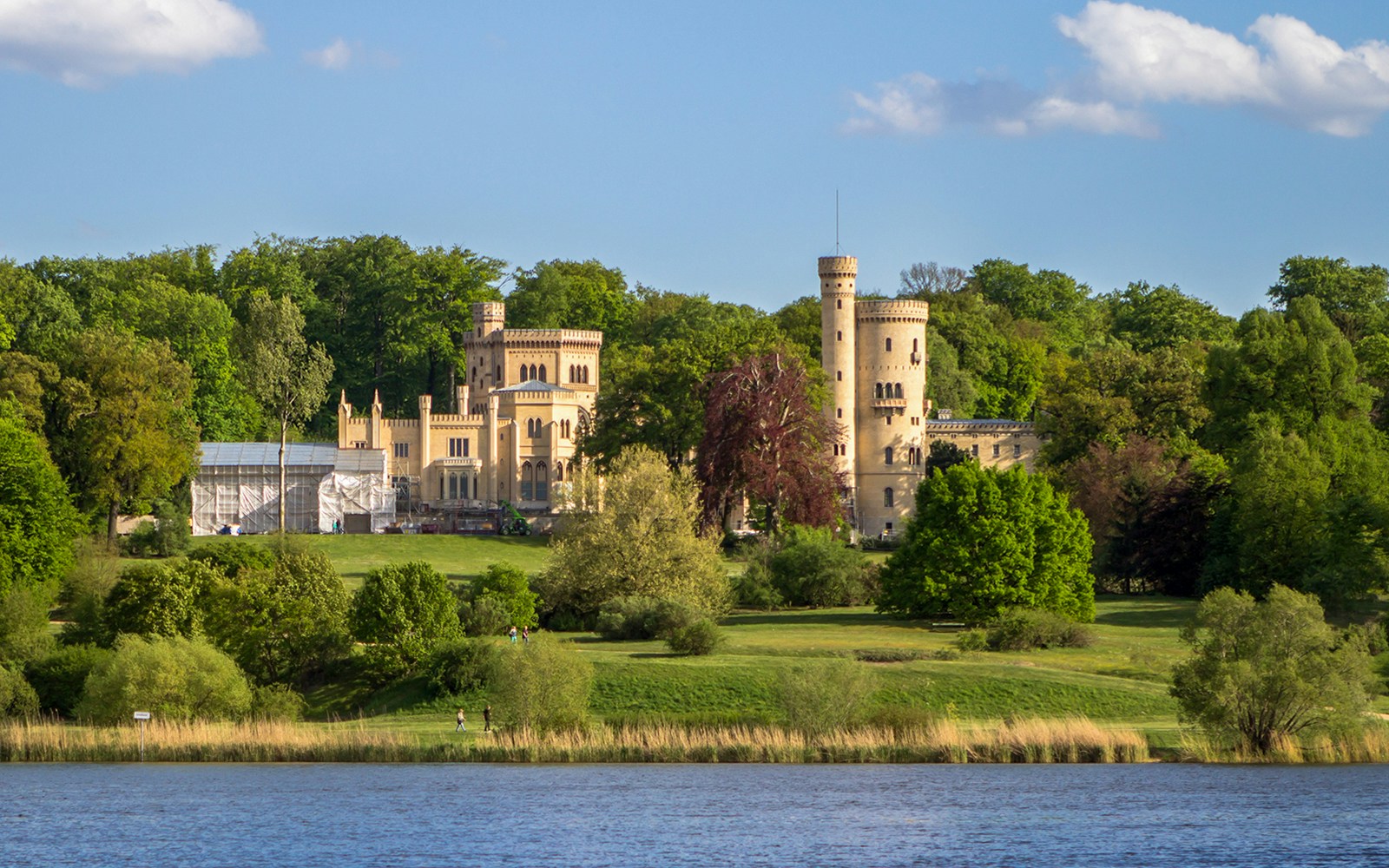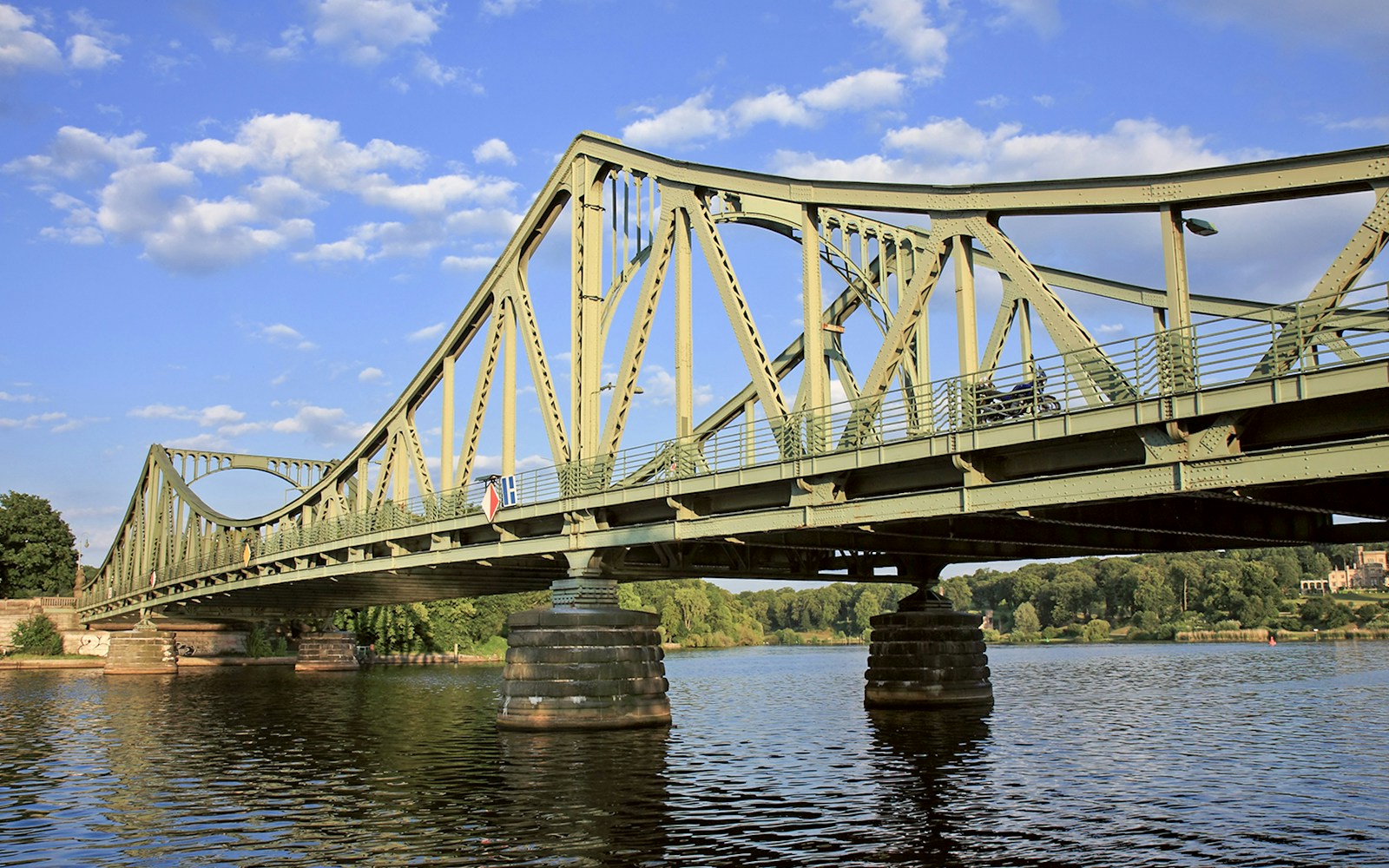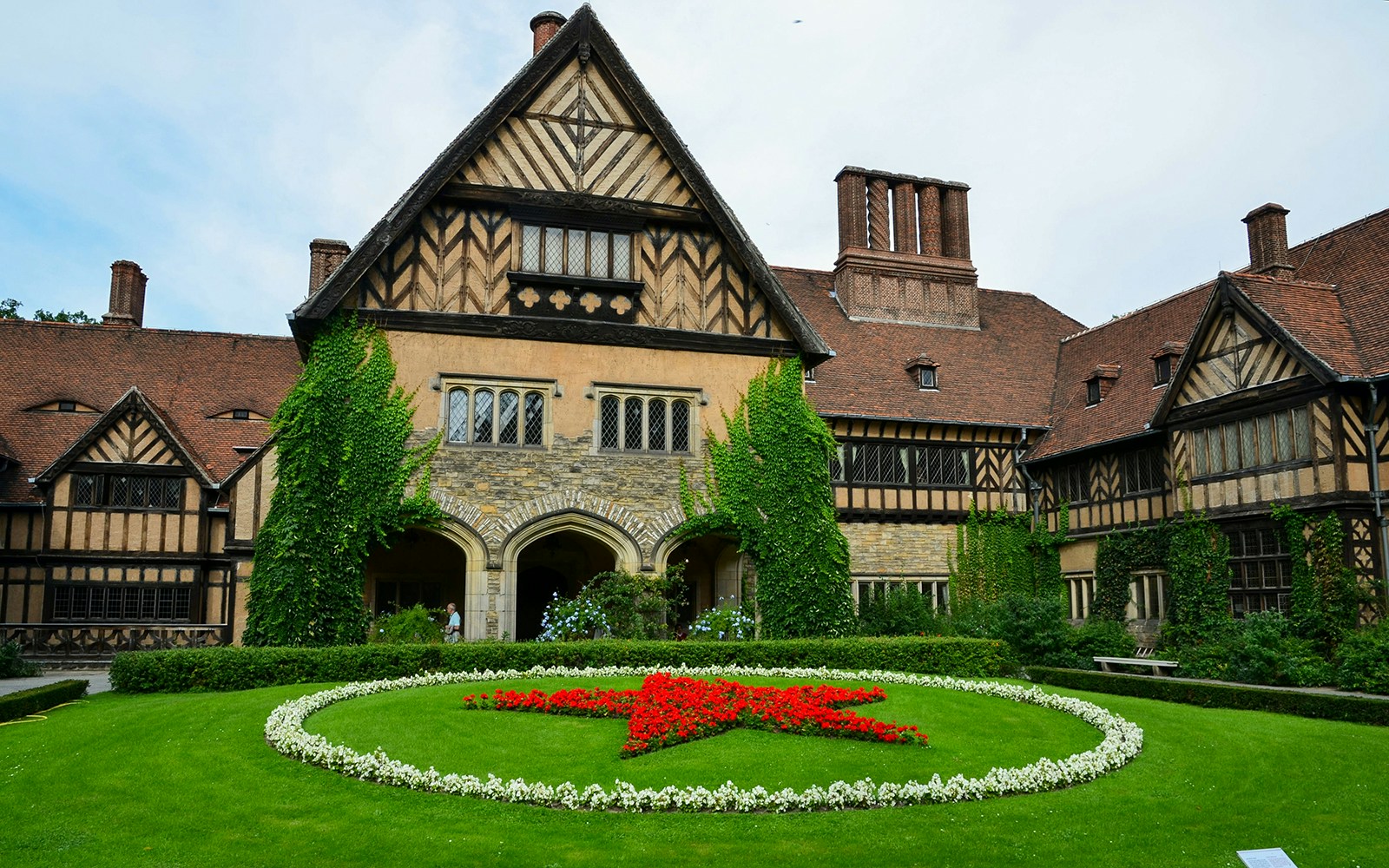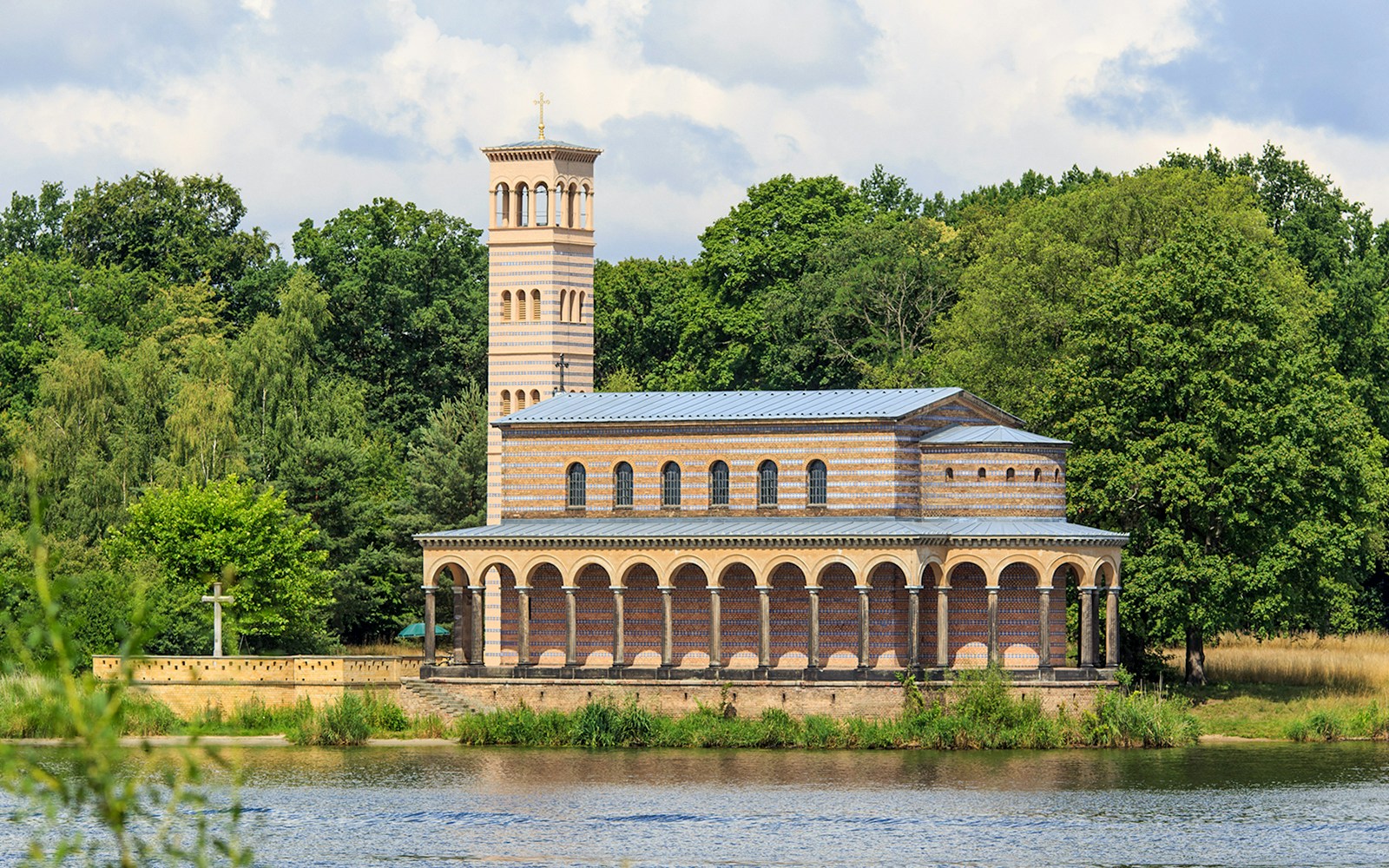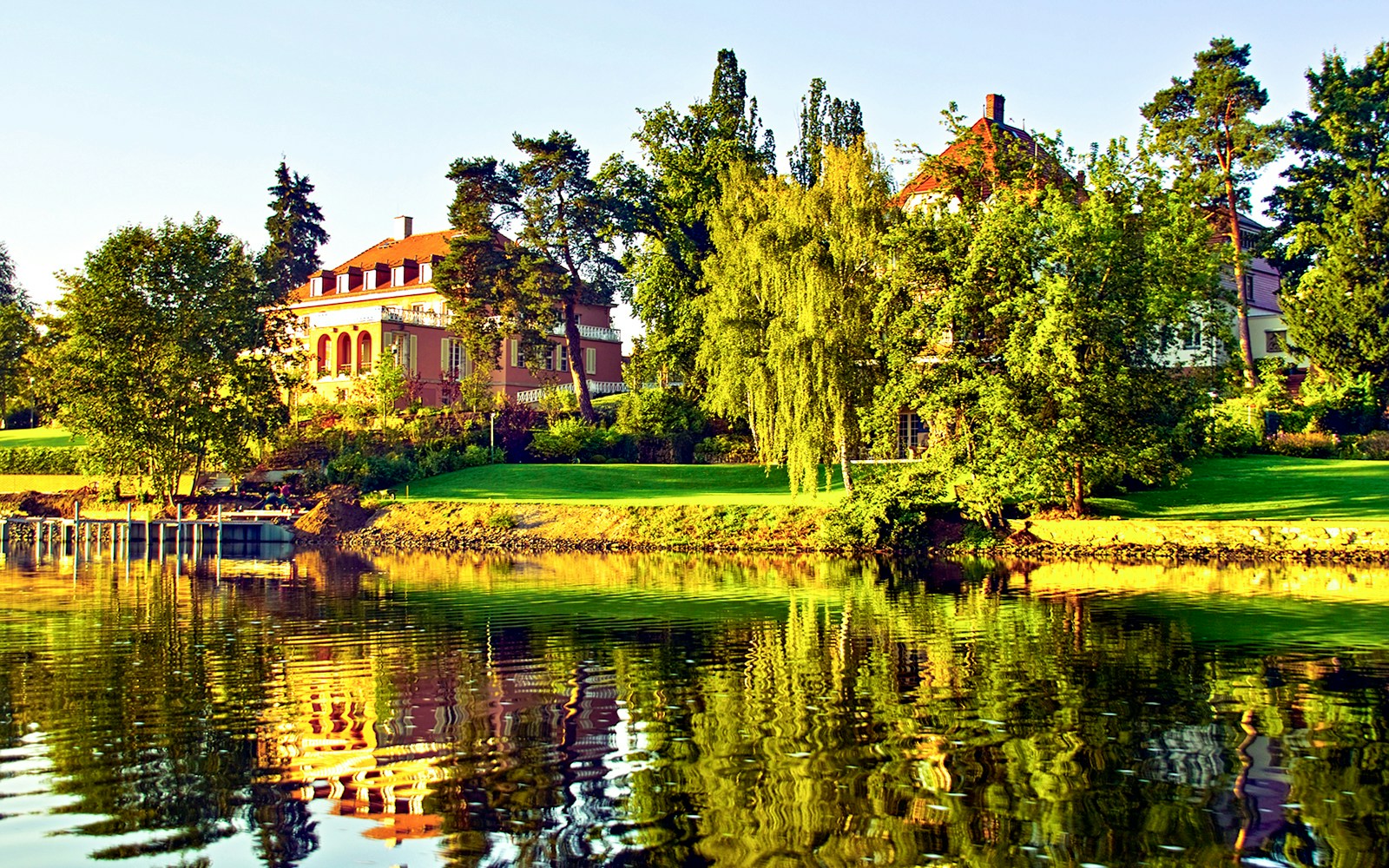A neoclassical summer residence designed by Karl Friedrich Schinkel for Prince Carl of Prussia. Transformed from a steward’s cottage, the villa now features Roman-style columns, arcades, and classical proportions that reflect Schinkel’s signature style. Its silhouette is clearly visible from the water.
- Berlin TV Tower
- Friedrichstadt Palast
- Tropical Islands
- Illuseum Berlin
- Sachsenhausen Concentration Camp
- DDR Museum
- Panoramapunkt Berlin
- Big Bus Berlin Hop-on Hop-off Tours
- City Sightseeing Berlin Hop-on Hop-off Tours
- Reichstag Tours
- Berlin Wall Museum
- Berlin Welt Balloon
- Berlin Icebar
- Madame Tussauds
- Samurai Museum Berlin
- LEGOLAND Discovery Centre Berlin
- Fotografiska Tickets
From Wannsee to Griebnitzsee: Berlin’s seven lakes tour
A look into the seven lakes
Each lake along the Seven Lakes Tour has its own rhythm, shaped by its size, surroundings, and place in history. While the cruise feels seamless, these seven bodies of water are actually quite distinct, offering a slow and steady shift in scenery.
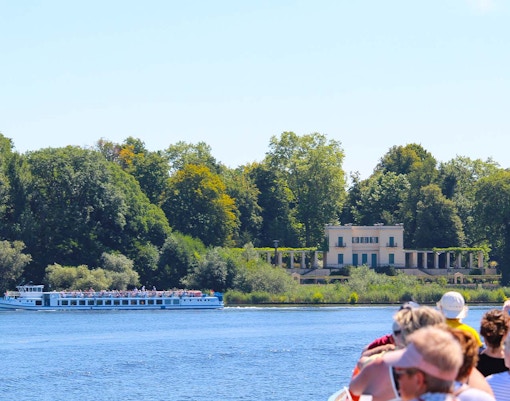
Kleiner Wannsee
Kleiner Wannsee is where the tour begins. Unlike its larger neighbour Großer Wannsee, this lake feels hidden and residential and can be differentiated by its narrow lake edged by leafy estates and private marinas. The narrow shape gives it a canal-like feel, and it’s often used by rowing clubs and sailing schools. Once the retreat of Berlin’s upper class, the villas along its shore hint at the area’s long association with wealth and leisure.
What makes it unique: It’s the smallest and most exclusive-feeling of the seven, offering a calm entry point that feels almost like a private inlet.
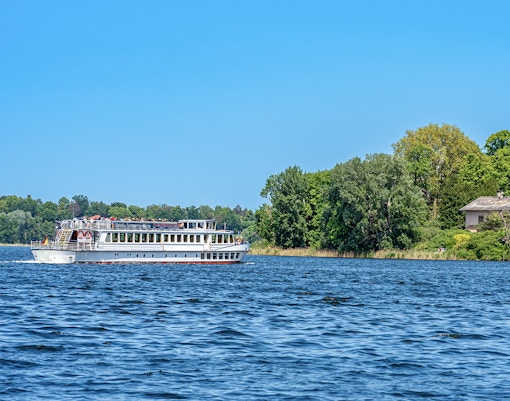
Pohlesee
Flowing into Pohlesee, you’ll notice the lake widen slightly, with tree-lined banks and minimal development. This lake marks a shift from the manicured residential edge of Wannsee to more secluded natural surroundings. The landscape becomes more wooded, and wildlife sightings like herons and wild ducks increase.
What makes it unique: Its undeveloped shoreline and quiet waters make it feel like a hidden nature reserve between more well-known lakes.
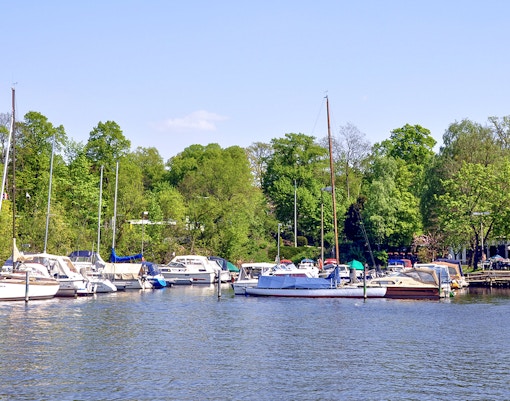
Stölpchensee
Stölpchensee is broader and sunnier, with stunning views in all directions. This lake has long been part of Berlin’s local holiday culture, often lined with summer homes, boat docks, and forest trails. In warmer months, you may spot paddlers, canoeists, and swimmers enjoying the waters. It’s also known for the Stölpchensee Island, a small patch of land in the middle often visited by waterbirds.
What makes it unique: It’s the most recreational of the lakes, where Berliners come to relax, swim, and picnic.
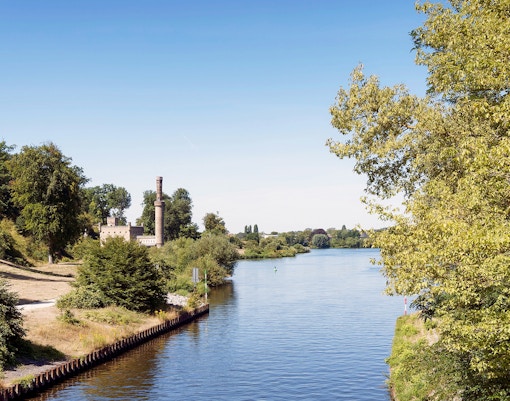
Griebnitzsee
Griebnitzsee is where the scenery deepens historically. Once a heavily monitored Cold War border zone, this lake separated West Berlin from East Germany. You’ll cruise past old patrol paths, surveillance spots, and villas once occupied by GDR leaders or foreign diplomats.
What makes it unique: This lake was part of the Iron Curtain. Tours today cruise along the former East-West divide, making this stretch one of the most politically charged waterways in Berlin.
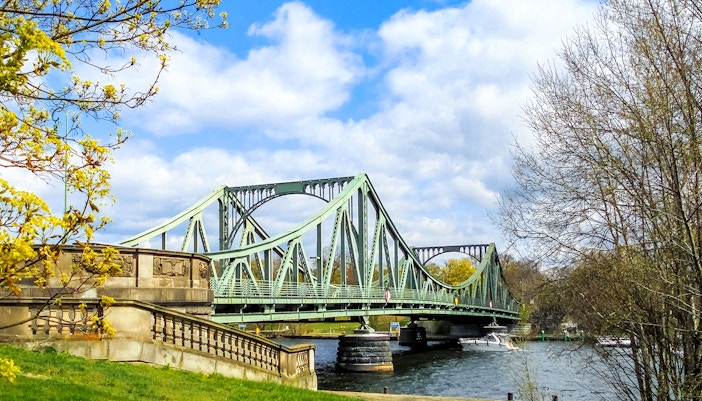
Glienicker See (Glienicker Lake)
Nestled between Babelsberg Park and the palace gardens of Glienicke, this lake offers postcard-perfect views of ornate bridges and historic estates. It’s most famous for the nearby Glienicke Bridge, where East and West exchanged spies during the Cold War. Though smaller than Griebnitzsee, Glienicker See offers a striking contrast between its now peaceful appearance and high-stakes past.
What makes it unique: The symbolic heart of the tour, this lake often combines royal scenery with espionage history, all within a short, glassy stretch of water.
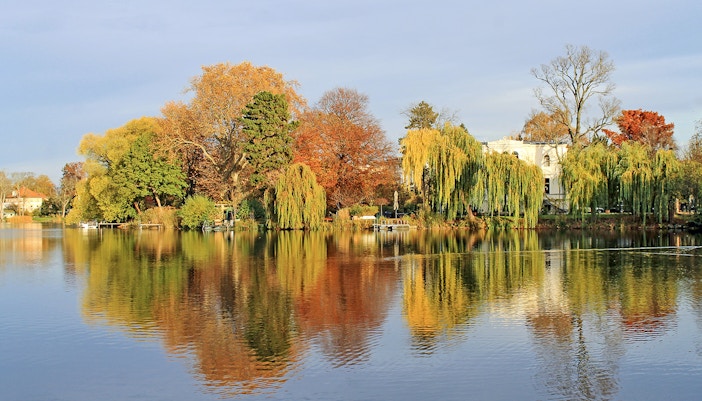
Heiliger See
Heiliger See (Holy Lake) sits entirely within Potsdam and offers some of the most regal scenery of the entire cruise. Its name dates back to the 18th century, and it borders the lush Neuer Garten, where Frederick William II once had his Marble Palace built directly on the lakeshore. The lake is protected and swimming is restricted, which helps preserve its stillness and pristine reflections.
What makes it unique: It’s the only lake lined by royal palaces and baroque landscaping.
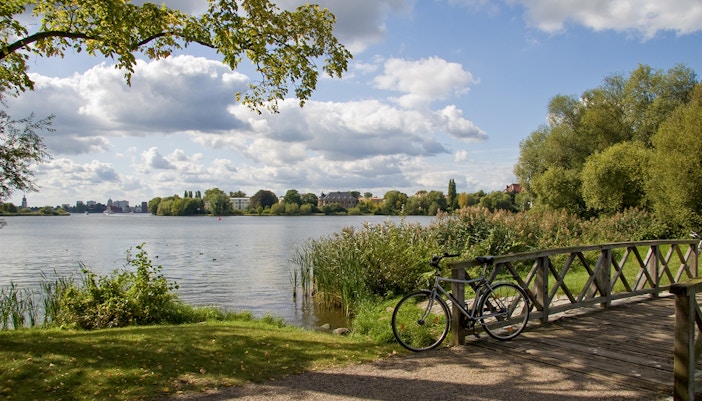
Jungfernsee
Jungfernsee is the northernmost and widest lake of the tour, where everything opens up and you begin to see the spires and cupolas of Potsdam. The tour often ends or turns back here, depending on the route. Along the way, you’ll pass Cecilienhof Palace, where the Potsdam Conference was held in 1945, and the Russian Colony Alexandrowka.
What makes it unique: It links the tour to global history, and connects Berlin to Potsdam’s sprawling cultural landscape.
Everything you can see besides the 'seven lakes' on the seven lakes tour
Schloss Glienicke
Plan your visit to the seven lakes
Boarding point: Anlegestelle Kleiner Wannsee | Find on map
Getting there:
- From Berlin city center: Take the S-Bahn (S1 or S7) to S-Bahnhof Wannsee. From there, it's a 5–7 minute walk to the pier along Kronprinzessinnenweg and Kleine Seestraße.
- By bus: Bus lines 114, 218, and 316 all stop at or near S-Bahnhof Wannsee, which connects directly to the boarding point.
- By car: Parking is available near the pier, but it can be limited on weekends. Use Kleine Seestraße or Kronprinzessinnenweg for access.
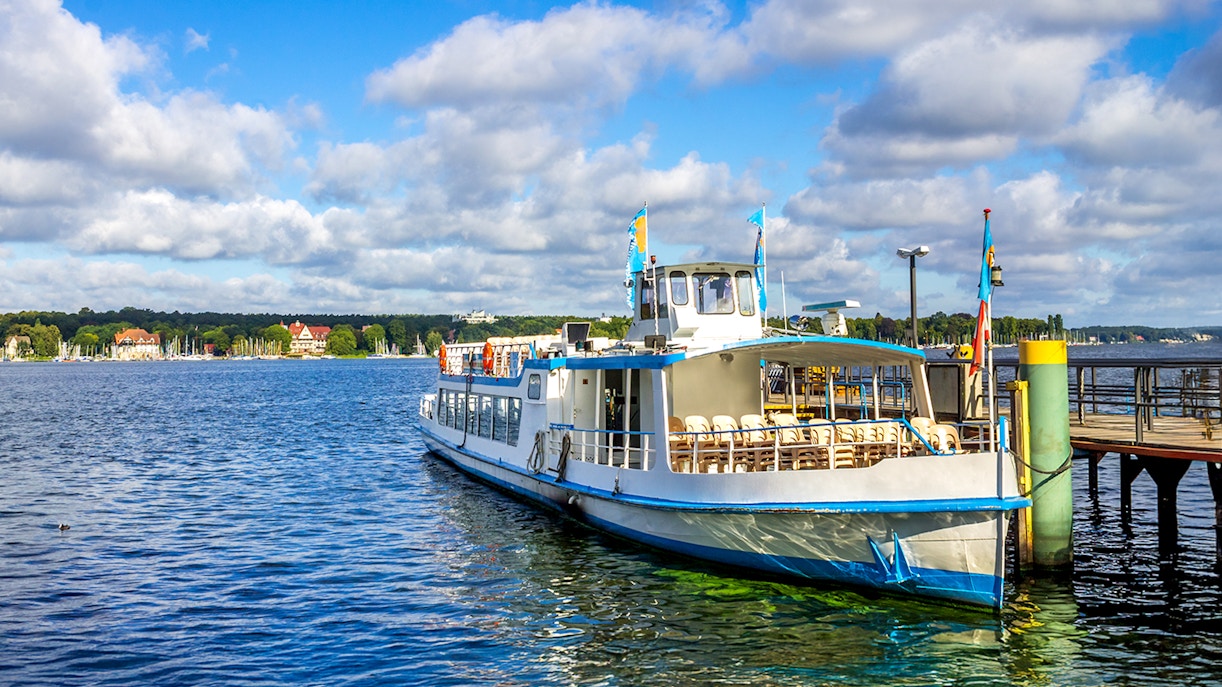
Weekday vs Weekend
- Weekdays: Best for peaceful cruising. Morning (around 10am) and late-afternoon (after 3pm) tours are especially calm, with open seating and minimal waiting times at the pier. Ideal for travelers who want quiet views and uninterrupted photo opportunities.
- Weekends & holidays: Popular with Berliners and day-trippers, especially from May to August. Expect larger groups and possible queues at boarding points. To avoid the busiest times, try to book early morning departures before 11am or opt for the last sailings of the day.
Peak Season vs Low Season
- Peak Season (June to August): The route is at its greenest and most active, with a full cruise schedule, extended hours, and boats running more frequently. Warm weather means open-air decks are more enjoyable, and wildlife like swans and herons are easier to spot.
- Low Season (April to May and September to October): The cruise takes on a more relaxed tone with cool breezes and fewer passengers overall.
Book your Seven lakes tour tickets
Frequently asked questions about the seven lakes tour
No. While both use parts of the Havel waterway, the Seven Lakes Tour focuses on the interlinked lake chain southwest of Berlin, offering a more nature-centric route.
Most tours start at the Wannsee Pier in Berlin or near Glienicker Brücke in Potsdam.
Yes. Many operators offer multi-language audio guides, including English and German.
Yes. Round-trip cruises return to the starting point, but some operators also offer one-way tickets.
Most boats offer drinks and light snacks. Some premium tours may include small meals or beer tastings.
Small dogs are often allowed, but policies vary. Always check with the cruise company in advance.
Some boats are partially accessible with ramps or low-entry decks. Contact your operator beforehand for specifics.
Yes. Boats usually have covered seating and indoor areas in case of bad weather.
Yes! It’s recommended, especially in summer or on weekends when tickets tend to sell out quickly.

